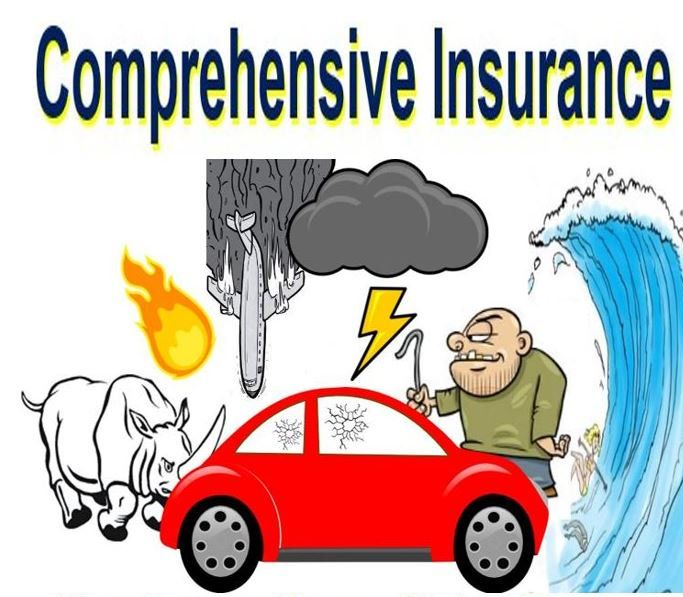1. Introduction to Collision Insurance
Car insurance is essential for vehicle owners, providing financial protection in case of accidents or damages. Collision insurance, a common but sometimes misunderstood type of car insurance, is specifically designed to cover damages to your vehicle resulting from a collision. It applies when your car collides with another vehicle or object, such as a fence or guardrail. Understanding collision insurance can help car owners make smarter decisions about their policies, ensuring they’re adequately covered in case of an accident.
2. How Collision Insurance Works
straightforward: it covers damages to your vehicle regardless of who is at fault. When you file a collision insurance claim, your provider will help cover the repair or replacement costs of your vehicle, minus the deductible you agreed upon when setting up your policy. This type of insurance typically kicks in after an accident involving another vehicle or a single-car accident where you may hit an object, like a pole or wall. Collision insurance is valuable for drivers who want additional protection beyond basic liability insurance, as liability does not cover repairs to your own vehicle.
3. Collision Insurance vs. Comprehensive Insurance

It’s common to confuse collision insurance with comprehensive insurance, but they cover different scenarios. Collision insurance only applies to incidents where your car is damaged in a collision, whether with another car or an object. Comprehensive insurance, on the other hand, protects against non-collision-related damages, such as theft, fire, vandalism, and natural disasters.
For example, if you accidentally rear-end another car, also covers the repairs for your car (the other driver’s vehicle would be covered by your liability insurance). However, if a storm damages your car, comprehensive insurance would handle that claim. Some drivers opt for both coverages for full protection, while others may only choose one based on their needs.
4. Benefits of Collision Insurance
One of the primary benefits of collision insurance is financial protection. Accidents are often unpredictable, and repair costs can be substantial. Collision insurance ensures that you won’t have to pay the entire repair bill out of pocket, which can save you thousands of dollars. Additionally, having collision insurance can speed up the process of repairing or replacing your vehicle since it offers a clear path for claims and reimbursement.
For owners of newer vehicles, collision insurance is especially beneficial, as it helps preserve the value of the car. Without it, any collision damage might result in costly repairs, potentially lowering the car’s resale value.
5. What Collision Insurance Covers
typically covers damage to your car resulting from:
- Accidents with other vehicles: Whether you rear-end another car or are involved in a multi-car accident, collision insurance will help cover your vehicle’s repairs.
- Single-car accidents: If you lose control and hit an object (like a tree or pole), collision insurance can cover the resulting damages.
- Rollover accidents: Even without an external collision, rollover accidents can lead to significant damage, and will help cover repair costs.
In general, it is highly useful for scenarios where your car sustains damage due to a collision, providing financial relief and peace of mind.
6. What Collision Insurance Does Not Cover
it has certain limitations. It won’t cover:
- Medical expenses: For injuries sustained in an accident, you’ll need separate medical or personal injury coverage.
- Damage from natural disasters or theft: Comprehensive insurance covers damages from events like hail, fire, or vandalism.
- Damage to another driver’s vehicle: Your liability insurance would handle the cost of damage to others if you’re at fault in an accident.
Understanding these exclusions helps you recognize when additional types of coverage may be necessary, such as comprehensive, liability, or personal injury protection.
7. Who Needs Collision Insurance?
beneficial for many drivers, but not everyone may need it. Generally, it’s recommended for:
- Owners of newer vehicles: If your car is worth a substantial amount, repairing it can be costly. Collision insurance protects that value.
- Drivers with leased or financed vehicles: Lenders and leasing companies often require collision coverage to protect their investment in the vehicle.
- Those who frequently drive in high-traffic areas: If you drive in congested areas, the likelihood of accidents is higher, making collision insurance more valuable.
8. Collision Insurance Costs
The cost of collision insurance varies, with premiums influenced by factors such as:
- Your vehicle’s make, model, and year: High-end or newer cars typically have higher premiums.
- Driving history: Drivers with clean records often pay lower premiums than those with accident histories.
- Location: Urban areas with higher traffic volumes usually mean higher premiums.
On average, collision insurance costs can range from a few hundred dollars per year to over a thousand, depending on these factors. Comparing quotes from multiple insurers can help find a policy that balances coverage with affordability.
9. How Deductibles Work in Collision Insurance
A deductible is the amount you pay out of pocket before your insurance covers the rest of the repair or replacement costs. For example, if your deductible is $500 and the repair costs $3,000, you’d pay the first $500, and your insurer would cover the remaining $2,500. Deductibles impact premiums; higher deductibles typically lower your premium, while lower deductibles increase it. Selecting the right deductible is essential for managing your budget and potential out-of-pocket expenses.
10. Collision Insurance for Leased and Financed Vehicles

If you’re leasing or financing a car, collision insurance is often required by the lender. This requirement ensures that their investment is protected should your vehicle sustain damage. In cases of extensive damage, collision insurance enables the lender to reclaim part of the vehicle’s value, mitigating financial loss.
11. Situations Where Collision Insurance is Essential
Collision insurance proves invaluable in specific scenarios, providing peace of mind and financial support. Here are some situations where it’s crucial:
- Accidents on congested roads: If you frequently drive in high-traffic areas, such as city streets or busy highways, the risk of collisions rises significantly. In these scenarios, collision insurance can save you from steep repair costs after a fender bender or a more serious accident.
- Poor weather conditions: Slippery roads, fog, and icy conditions increase the likelihood of losing control and hitting other vehicles or objects. Collision insurance ensures that if you accidentally slide into a barrier or another car, your financial responsibility is minimized.
- Driving on narrow or challenging roads: Areas with tight corners, narrow lanes, or limited visibility raise the risk of accidents. Having collision coverage in such situations is wise, as it prepares you for unexpected events.
- Rental car accidents: Many car rental agencies offer collision insurance options. However, if you already have collision coverage through your car insurance policy, it may extend to rental cars, saving you from purchasing additional insurance from the rental company.
These scenarios underline the importance of collision insurance, especially for drivers who face heightened accident risks.
12. When to Drop Collision Insurance
Knowing when to drop collision insurance is as crucial as understanding when to keep it. Here are some factors to consider:
- Vehicle age and value: If your car is older or has significantly depreciated, the potential payout after an accident may not justify the premium costs. Many experts suggest dropping collision coverage if your vehicle’s value is less than the combined cost of the premium and deductible.
- Cost-benefit analysis: Take a close look at how much you’re paying for collision coverage compared to the maximum payout you could receive if an accident occurs. In some cases, it might make financial sense to save on premiums and set aside funds for repairs if needed.
- Personal financial stability: If you’re in a stable financial position to cover potential repair or replacement costs, dropping collision insurance might be a reasonable choice. However, if an unexpected repair bill would be challenging to handle, it might be worth keeping the coverage.
- Driving habits: If you drive infrequently or mainly on safe, low-traffic routes, your chances of needing collision coverage may be lower, making it an optional expense.
Evaluating these factors can help you determine the right time to consider removing collision insurance from your policy.
13. How to Choose the Right Collision Insurance
Selecting the right collision insurance requires careful research and comparison. Here are steps to guide you:
- Assess your vehicle’s value: Knowing your car’s market value can help you estimate the appropriate level of coverage. Newer, higher-value vehicles typically require more comprehensive .
- Determine your budget: Establish a realistic budget for your monthly or annual premium and choose coverage that aligns with it. Remember to consider how different deductibles affect your premiums and out-of-pocket expenses.
- Compare multiple quotes: Shopping around and comparing quotes from various insurers is essential. Look for policies that balance affordable premiums with reliable coverage.
- Consider bundling: Many insurers offer discounts for bundling multiple types of insurance, like home and auto. This approach may lower your collision insurance premium.
- Evaluate insurer reputation: It’s crucial to choose an insurer with a good reputation for customer service and claims processing. Research customer reviews and ratings to ensure you’re working with a trustworthy company.
Taking these steps helps ensure you’re not only getting the right coverage but also receiving good value for your money.
14. Collision Insurance Claim Process
Filing a collision insurance claim is generally a straightforward process. Here’s a step-by-step guide to help you understand what to expect:
- Report the accident immediately: Contact your insurance provider as soon as possible after the accident. Provide details about the incident, including the date, location, and any other relevant information.
- Document the accident scene: Take photos of the damage, the accident location, and any other vehicles involved. This documentation helps support your claim and can clarify accident details.
- Submit the claim: File your claim through your insurer’s online portal, mobile app, or over the phone. You’ll typically need to submit an accident report along with photos or videos of the damage.
- Work with an adjuster: After filing, an insurance adjuster will assess the damage and determine the payout amount. This step may involve vehicle inspection at a repair shop recommended by your insurer.
- Get estimates and approve repairs: Your insurer may require a repair estimate from an approved body shop. Once approved, your vehicle can be repaired, and your insurance will cover costs minus your deductible.
- Complete the claim: After repairs, your insurer finalizes the claim and issues payment. If the repair costs exceed your deductible, your insurer will cover the remainder.
Knowing the claims process in advance can streamline the experience and help you manage the steps efficiently.
15. Tips to Reduce Collision Insurance Premiums
doesn’t have to break the bank. Here are some ways to keep premiums manageable:
- Opt for a higher deductible: A higher deductible often translates to a lower premium. Choose a deductible that you can comfortably afford in case of an accident.
- Maintain a clean driving record: Insurers reward safe driving. Avoiding traffic violations and accidents can help you qualify for better rates.
- Take advantage of discounts: Many insurers offer discounts for things like low mileage, safe driving courses, and bundling multiple policies. Ask your insurer about discounts that may apply to you.
- Limit unnecessary coverage: If your car’s value has depreciated significantly, consider adjusting or even dropping collision coverage.
- Use telematics programs: Some insurers offer usage-based discounts through telematics devices that track your driving habits. Safe drivers can see significant savings by using these programs.
By implementing these strategies, you can make collision insurance more affordable while maintaining essential coverage.
16. Conclusion
provides car owners with essential protection against unexpected repair costs after an accident. It’s particularly valuable for newer or high-value vehicles, leased or financed cars, and drivers who frequently travel in high-traffic areas. Understanding the specifics of collision insurance—what it covers, what it excludes, and how to reduce premiums—can help you make informed decisions that align with your financial goals and driving habits.
Ultimately, a safeguard that can ease financial burdens in the event of a collision, giving you peace of mind on the road. Whether you’re considering adding collision coverage, adjusting your current policy, or evaluating its necessity for an older vehicle, making an informed choice will help you feel secure in your insurance investment.
FAQs
Is collision insurance mandatory?
Collision insurance is not legally required but is often required by lenders if you lease or finance your vehicle.
- Can I use collision insurance for a hit-and-run accident?
Yes, collision insurance generally covers hit-and-run incidents, though it’s always best to check specific policy details with your insurer. - How much does collision insurance cost on average?
The cost of collision insurance varies based on factors like vehicle value, driving history, and location. It generally ranges from $300 to over $1,000 annually. - Does cover rental cars?
Many collision policies extend to rental vehicles, but it’s wise to confirm this with your insurer before relying on it for rental coverage. - When should I consider dropping ?
If your car is older and its value has significantly depreciated, the cost of collision coverage may not be worth it. Dropping coverage can make sense if you can handle potential repair expenses out-of-pocket.
